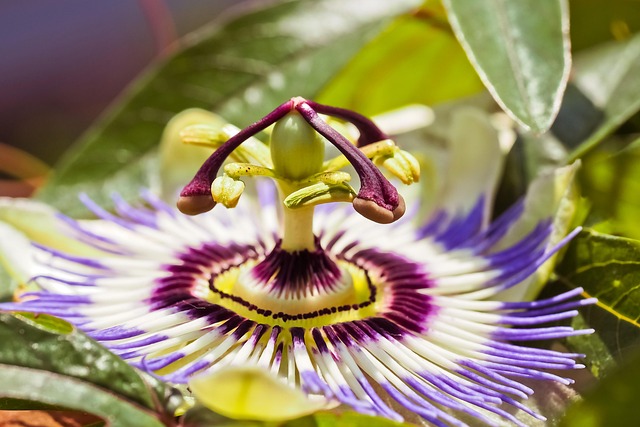Fall plant preparation is vital for maintaining a healthy garden throughout the seasons, involving steps like addressing pests and diseases, removing dead leaves, using organic treatments, and applying mulch. As winter approaches, this preparation protects plants from common issues. In spring, cleanup and strategic planting enhance resilience against pest infestations. Summer maintenance focuses on watering, attracting beneficial insects, and fall preparation ensures healthier plants and a more pest-resistant garden next season.
In the ever-changing seasons, so too do the challenges of pest and disease prevention in your garden. This comprehensive guide navigates the unique requirements of each season, offering tailored strategies for a healthy, vibrant landscape. From preparing your plants for autumn’s chill (Fall Plant Preparation) to combating winter’s invaders (Winterize Your Garden), we explore essential practices. Learn effective techniques for spring cleanup (Spring Cleanup and Maintenance) and summer heat management (Summer Heat and Humidity) to ensure your garden thrives year-round.
Fall Plant Preparation: A Comprehensive Guide to Pest and Disease Prevention
As autumn approaches, it’s crucial to prepare your plants for the season ahead. Fall plant preparation involves a comprehensive approach to pest and disease prevention, ensuring your garden thrives during the cooler months and into spring. Start by assessing your plants for any signs of existing issues, like pest infestations or fungal diseases. Remove dead leaves and plant debris to deprive pests and pathogens of hiding places and food sources. A thorough cleaning provides a fresh start for your plants’ health.
Next, consider using organic pesticides and fungicides specifically formulated for fall use. These products can help manage common autumnal pests like aphids and spider mites while minimizing environmental impact. Additionally, applying a layer of organic mulch around plant bases improves soil structure, retains moisture, and creates an inhospitable environment for many pests. Incorporate these preventive measures into your fall plant preparation routine to promote robust, resilient plants.
Winterize Your Garden: Protecting Plants Against Common Winter Pests and Diseases
As winter approaches, it’s crucial to prepare your garden for the colder months to protect plants from common pests and diseases. Fall plant preparation is a vital step in ensuring your garden thrives during the winter season. One of the primary concerns is preventing insect infestations that can cause significant damage. During this time, many insects seek shelter in protected areas, so making sure your plants are well-prepared can deter them. Remove any dead plant matter and debris to eliminate potential hiding spots for pests like aphids and spider mites.
Additionally, winterizing your garden involves protecting plants from fungal diseases that thrive in cool, moist conditions. Applying fungicides and ensuring proper air circulation around plants can help prevent infections. Consider planting resistant varieties known for their resilience against winter-related issues. By taking these proactive measures, you’ll create an environment that is less hospitable to pests and diseases, ensuring your garden’s health and longevity through the colder seasons.
Spring Cleanup and Maintenance: Strategies for Preventing Seasonal Insect Infestations
As spring arrives, it’s crucial to prepare your space for the season ahead. This includes a thorough spring cleanup and maintenance routine, which acts as a strategic defense against seasonal insect infestations. Start by removing all debris, particularly around the perimeter of your property, eliminating potential hiding spots for pests. Ensure that fallen branches are pruned, and consider deep-cleaning outdoor living areas to disrupt breeding cycles and reduce habitat accessibility.
Don’t overlook fall plant preparation as a vital step in pest control. When planning your garden’s renewal, opt for disease-resistant varieties and practice good spacing to enhance air circulation—a natural barrier against many common pests. Regularly inspect plants for any signs of distress, addressing issues promptly to prevent widespread problems. This proactive approach ensures a healthier environment and minimizes the risk of insect infestations during the warmer months.
Summer Heat and Humidity: Tips for Keeping Plants Healthy and Pest-Free
As summer heats up, so does the activity of pests and diseases in your garden. High temperatures and humidity create a fertile ground for insect infestations and fungal growth. To keep your plants healthy and vibrant throughout this season, focus on proactive measures like regular watering to prevent drought stress, which weakens plants and makes them more susceptible to pests. Encourage beneficial insects by planting flowers that attract them; these natural predators can help control pest populations.
For fall plant preparation, consider summer’s lessons learned. Remove any infected plants immediately to prevent the spread of diseases, and apply appropriate fungicides or insecticides as needed. Prepare soil for new plantings with organic matter to enhance its ability to retain moisture, which is crucial during the transition to cooler temperatures. This fall plant preparation not only supports healthier plants but also contributes to a more pest-resistant garden next season.
In conclusion, maintaining a healthy garden throughout the year requires a strategic approach to pest and disease prevention. From preparing your plants in the fall to dealing with summer humidity, each season presents unique challenges. By implementing the tailored strategies outlined in this guide—including comprehensive fall plant preparation, winterization techniques, spring cleanup, and summer care tips—you can ensure your garden stays vibrant and robust, fostering a balanced ecosystem that thrives with minimal intervention.
